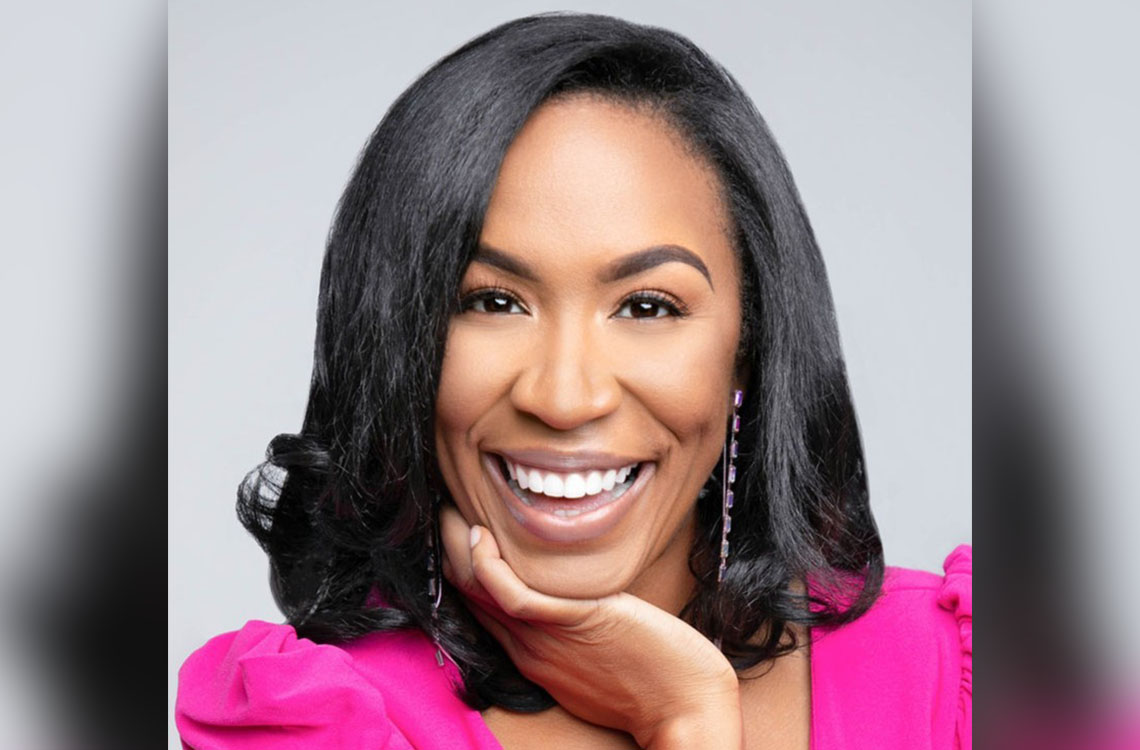Approaching Leadership Through Neuroscience With Keshawn Hughes
Every human being has a brain, and its powers are almost limitless – if utilized the right way. Those who want to become an effective leader must tap deep within the organ between the ears and embrace neuroscience-based leadership. With this approach, you can connect with your team on a greater level. This will allow you to sense when your people are burnt out without them even telling you. But before you can reach this level of intuition, you have to be clear on yourself first. You have to appear trustworthy and empathetic as a leader.
Join Sam Reeve, Char Miller, and Sumit Singla as they talk to the Founder of NeuroSavvy Leadership, Keshawn Hughes. Tune in as they discuss how neuroscience works and how you can effectively lead with it. Discover how to build trust and empathy within your team to cultivate a healthier and rewarding work environment. Start setting up your team towards success with the golden nuggets of wisdom from this episode!
—
Approaching Leadership Through Neuroscience With Keshawn Hughes
We have a nice full house. We have a lovely panel of experts and a great guest speaker. Our topic is setting up your team for success with a neuro-savvy approach. If you have never been to one of these people strategy forums, registered randomly, and didn’t know what you were diving into, let me give you a little bit of insight. We are here to engage, energize, and elevate your employees and company.
We get together every week. Every week is different. It is always free. Not only do we live, we stream it across multiple platforms, but we also turn it into a podcast. If audio is more your thing, you can also listen to it in the podcast version. We bring a different guest speaker every week. They come and chat with our expert panel of hosts. We discuss all types of topics here.
I’m going to introduce you to everybody. I will start with Char. She is a business owner. She has created and runs multiple companies. She has a significant amount of experience in HR. She has worked as a career coach and consultant. We have Wendy, who works with CompTeam. She specializes in talent management. She is certified in the TMA Method. She has been helping to run things here and getting speakers in. We are grateful for that. We also have Howard, who also works with CompTeam. He is a compensation advisor and consultant. He helps companies transform the Department of Compensation using new and improved technologies and software.
We have Sumit. He is a people strategist. He works with all kinds of companies, helping reshape them and creating a roadmap so they can change and experience HR transformation. He also helps in the areas of diversity and inclusion. We have Sam. Not only does he bring all this together here at the show, but he is the Founder and CEO of CompTeam. His team is expanding. With everything you need to know about compensation and talent initiatives, Sam is the man.
That brings me to our lovely guest speaker. We have been chatting it up. I already know she is going to be great. We have Keshawn Hughes. We are excited to have her because she is the Founder of NeuroSavvy Leadership. She is a neuro coach and neuro leadership consultant. She helps HR and DEI tech leaders specifically. She helps them develop and retain an inclusive workforce. She uses a neuroscience-based framework.
Neuroscience and LLP are the big things now. I’m excited about this. We are excited on a personal level. She is also a keynote speaker. She has spoken for a lot of large companies. She has worked with LinkedIn, Ulta Beauty, Twitch, and Fullscript. She got a lot of experience. We are excited to welcome her. Keshawn, Thank you so much for being here.
Thank you for having me. I have been looking forward to this conversation. When you mentioned neuroscience, I light up. I’m excited to know that you all want to talk more about it too. My family and my friends hear about it all the time. They are done with it. I have new people to talk to about it. This is what is exciting for me. Thank you.
It is great to have you on, Keshawn. Can you start by telling us a little bit about your journey? How did you get into this neuroscience business and help the people that you help?
My background is in marketing and project management. I did that for several years. I loved and enjoyed it. That is where I have trained and what my degrees are in. I did it for companies like Newell Rubbermaid, LexisNexis Risk Solutions, and Sharewell, which were purchased a couple of years ago. I joined them right as they were growing from that startup version of themselves into more enterprise engagements.
I did that and enjoyed it, but for myself, I began to personally feel a disconnect internally between my work and myself. It showed up as burnout. I didn’t even have the language for it at the time. Once I recognized that was what it was, I sought and got professional help and quickly was beginning to recover. As a part of my recovery journey, I went back to school.
I found things that I was interested in. One of the markers for burnout is feeling inefficacy. What you are doing doesn’t matter. I started to connect to what mattered to me, which was communication, connecting to people, and talking instead of doing the things that I was doing like a robot at work. That’s how I felt.
One of the markers for burnout is the feeling of inefficacy. You may be feeling that what you're doing doesn't really matter. Share on XI discovered neuroscience-based leadership models in graduate school. That is when the light bulb started to gleam for me. I followed that path. You mentioned podcast. I’m an avid podcast listener. I happen to hear the same neuroscientist on three different podcasts. It piqued my interest again. I said, “Let me set up a phone call with her and see what she has going on.” What she is saying is interesting to me. By the end of that phone call, I had given her all my money. I had signed up for her leadership program, and the rest is history.
In 2019, I started my own neuro coaching and neuro leadership consulting training right before the pandemic hit in 2020. In that March and April 2020, if you want to go back in time, I know that it might be hard for people to want to go back to that place, but there was uncertainty and fear around what we were entering and going into.
Several months into my neuroscience coaching training program and newly off of my leadership Master’s degree that I had in strategic communication, I felt primed and ready to transition from the work that I was doing as a senior product release manager for the tech company that I was working for. I was sharing this knowledge in a way that could be practical and easy to understand. Leaders could feel a sense of well-being and resilience as we are still moving out of that pandemic stage. That is what I have been doing for the last several years. That is a long story, but in personal and organizational, that is how it all ties together.
In your learnings, what should leadership know about neuroscience? It sounds technical. What should they know about this, and how should they leverage it in their practice?
What lit me up about neuroscience is that it is practical. Something that I feel across all of our difference is we are all uniquely made across regions, diversity, and identities. There are many ways in which we are unique. One point that we all share is we all have brains. They tend to function in similar ways. We experience them differently. We have experienced them as neurotypical or neurodivergent. There are all these different labels and ways in which people say that we show up, but our brains tend to function the same.
When we are in distress, we tend to go into fight-flight. That is across the human experience. When we are calm, and at peace, we have the ability to be innovative and connect with one another and be creative. Understanding how we work internally is something that we all share. In this time when things can seem off-kilter and when we can feel disconnected as I once did, I find that having an understanding of neuroscience and practical neuroscience language, not the technical kind, but the kind that I talk about as a communicator. As a project manager, I have some steps to follow. It is making it easy for people to want to tap into what that is and share it for themselves.
You mentioned neurotypical versus neurodivergent. What does that mean?
Neurodiversity is the umbrella term to explain what I was saying, how we all have unique experiences of how our brains show up in the world. There is a diversity of us on the call. There is a group of us. We all experience life and our brains differently. What we find is that culture defines how typical brains should work. That is what gets espoused in organizations and interpersonal communication when we have these understandings of how we are to perform and how we are to show up at work and in life.
Culture defines how typical brains should work. Share on XNeurodivergence is one in which people possibly don’t fit within that standard. They may have had labels or diagnoses like ADHD, synesthesia, or autism on the autism spectrum. They tend to operate differently. The basics of how their brain functions are the same. When they are in distress, they will express certain markers. When they feel joy and calm, they express certain markers. Those are some of the labels that are used to describe ways in which we show up, how our brains function, and things that we can notice about each other as we engage at work.
We are a diverse world. There are a bunch of different ways people think, gender’s ethnicity. There are a lot of different versions of humanity. As you assess or help people understand themselves better and then understand their people better, what is your method of going about understanding that? Is there a framework that you use?
It starts with awareness. I said this in the promo video. I don’t know if anyone saw that. My approach to neuro coaching and neuro consulting is inside out. I’m helping leaders to become more self-aware. Research shows that when leaders are self-aware, they are happier, their organizations perform better, and they are better at leading teams. We start with awareness of self.

Neuroscience-Based Leadership: Self-aware leaders are happier and better at leading their teams. They become more focused and less stressed.
As we become more aware of ourselves and understand the ways in which we function, what does cause us to have distress and what helps us to stay focused? Using practical, connecting language like neuroscience language. When I say fight-flight, everyone nods their heads. We understand what that means. Using that language as you are leading a team, describing a new project, and going into a new initiative helps to bring us all along the journey together where we all have a similar understanding and expectations can be met in that way. It starts with awareness
Awareness is a great segue of what is going on now. Whenever a leader is dealing with societal issues, pressures, economic issues, business issues, and so forth, what are the top things that leaders should be aware of that are related to your approach?
The first one that comes to mind is burnout. That comes from my personal experience I shared, particularly in results-driven organizations where you have high-achieving people, even perfectionistic people, who love what they do and work. They want to perform well. Those are some markers to look for. That can start the path to burnout if you have those characteristics as an individual. You are driven. Results, numbers, and performance metrics are important to you. You will do that at the cost of your health and well-being.
Things that leaders and organizations should keep in mind now is the propensity for burnout. Burnout numbers are more than they ever have been. When I started my work in 2019, that was the year that the World Health Organization deemed it a worldwide epidemic. This was not here in the US. It is not something for US-based companies to think about. It is global, and it is affecting workers from around the world.
It is something that leaders and organizations should be aware of as they look at their culture and what drives them, what is important to them, and what their values are. You are tying it to health and well-being at the top and the bottom. As you are cycling through projects and moving year to year, you always have that as a grounding force. We want our workers to be well. As a leader, I want to be well. I can then model, express, and connect with people who I work with in that way. That is important and key. That is what drives and helped me to get to the place of not only being a neuro coach in organizations but founding my organization, NeuroSavvy Leadership, and helping them to focus on that specifically.
Having a healthy workplace is important. Most leaders have understood the importance of mental health over the past few years and how it drives performance, employee happiness, and customer happiness. One thing I want to dive into that you mentioned is the concept of perfectionism. A lot of leaders and business owners out there have been successful because they are operating at a higher standard. They are delivering better products and services than their competitors. In a sense, some of this perfectionism has helped them, but where did they find the balance?
There are many different ways. Our bodies tap us on the shoulder before they begin to slap us across the face, and we are flat out. They knock us out. Going back to that self-awareness, having not just mental awareness of your environment and how you are navigating in your environment. What signals and cues is your body sending you to let you know it is time to look away from the computer and take some deep breaths? Maybe take a break and walk around the block if you can. If you have a pet, I have one that keeps me. I have to take him out. He is calling to me now and looking at me. He is giving me the stare like, “We should go out now.”
Having that type of internal body awareness is one way that we lead from the inside out. As you get to know yourself, you can spot that in other people and as you communicate and connect. We have update meetings with our teammates. We want to practice empathetic listening, be empathetic leaders and have that support to where even if they don’t say it with their mouths and we don’t hear it, we can sense it. We follow those senses.

Neuroscience-Based Leadership: As you get to know yourself better, you can spot issues other people are seeing. You want to be an empathetic leader who can sense when your employees are struggling.
We take those empathetic guesses where we can pick up on the cues that their body language, possibly their work performance dwindling. They begin to make mistakes that they typically don’t make. That is how it can show up in subtle ways. If we can address it initially, we can avoid burnout on the outside after years or even weeks of being in those states in which we are not listening to our bodies and giving ourselves the breaks we need as human beings.
Being aware of ourselves is important. There are also reminders. It is great to have those pets. Sumit tells us that having animals can help remind us to take breaks.
A lot of time, you get a forced break when somebody comes and sits on your keyboards to budge. It is a good time to take a break. The cat ate my homework is an excuse that I can give to some clients because it happens. That is one of the best things about working from home or working at one’s own desk. We got one dog, three cats, and a human child. There is a lot of chaos. It does strengthen your ability to deal with ambiguity and chaotic situations.
As a recovering perfectionist myself, all those things you mentioned. A cat walking across my keyboard. Years ago, that would have sent me into a tizzy. I would have gotten extremely upset. What neuroscience show is when you get into a distressed or upset state, it can take 20 to 60 minutes to come back to a state of calm and peace.
When we are focused on performance, and we want to be productive and have great results, who has time to wait 60 minutes to come to a state of calm to get back focused on the work and deliver the results you are looking to do? Training yourself to become more comfortable with ambiguity. Becoming more empathetic as a leader and having human children, as well as first children in your life and allowing life to happen, and recognizing I’m still safe because that is what our brain is responding to threat or reward. Is this a threat to me? Is this a threat to my survival?
In modern times, all of us on this call are safe. Being able to look at our distress when that happens through a lens of realism, is this something I need to distress myself over? Is this something I can control in any way? If so, I can start by controlling my breathing. If that is the only thing I can control during this difficult conversation, that is what I will do. Take some deep breaths. I like to call them invisible hacks that people can do, particularly in virtual and hybrid workplaces. There are many ways you can keep yourself in a state of homeostasis or calm and peaceful. You can be your best self health-wise and deliver the best results you can work-wise.
One question I have here is, how do we address the cultural aspects of this? For example, you spoke about companion animals. If I remember correctly, one in every three households in the US has a cat. Therefore, one would assume that somebody in the US is a lot more used to seeing cats or familiar with their behaviors and is more welcoming. Whereas in a country like India, there is a lot of superstition about cats. They are considered evil omens and stuff like that. A lot of people might be put off by the site of a cat or may not be able to relate to folks like us, going on for hours about, “My cat did this. My cat sat here.” How do we bring that element to create some inclusion despite the diversity?
It speaks to the differences that we started our conversation about. We are all unique and different. In the workplace, it is the best opportunity to put that to the test and see how kind you can be as a human and how curious you can be. One of the neuro-savvy markers that I like to train on is curiosity. Approaching differences with curiosity as opposed to implicit bias that can come up that we can’t control. We recognize, as humans, we have that everyone does. Our culture can feed those. It can be a situation in which we are not even aware that we have certain biases. Curiosity, communication, and perspective-taking. Let’s talk about it.
Approach differences with curiosity instead of implicit bias. Share on XThe workplace can be great. This is where training and development can come into place. Having programs where learning and development are that overarching communication everyone gets within the company. Everyone is welcome. There are expectations to be met for employees to have this training. They can be introduced to differences in this way. They can be exposed to it.
We have heard of exposure therapy. The more you are exposed to something, the less your brain might react in distress to it. To communicate about it and to conversations where curiosity is there and undergirds it is helpful and useful. To have people who can mediate those conversations. Those are some key factors at play to have incorporated into the workplace. We can come together, live differently, be celebrated, and feel comfortable in our differences so that we can once again produce the best results possible.
One thing that is mentioned is that a lot of leaders and people in business have their own personal baggage. There can be cultural norms that are different across the world. As we grow as a global community, we need to be more comfortable with the concept of that variability across the globe, the volatility of the nature of the economy, and things such as pandemics that we have learned to deal with.
A lot of leaders still lack a sense of control, and they want it back. They were like, “I want people back in the office. We need to change the way we have been doing things, so I have more control.” That is limiting. We use the example of Sumit’s cat walking across the screen, and a few years ago, that would be a horrifying experience for some individuals. In business, somehow, we developed this professional facade. This is a way we do business. If I get outside of these parameters of what is considered a societal norm here, I will be considered less professional, not reliable, and untrustworthy, bringing all these things to it.
We have been fortunate and growing over the past several years of understanding that we are human. We should all embrace each other as individuals and understand the environments that we are in. That gives us a great advantage in business. It is a disservice to move back to that old framework of everybody having to be in the office. You have to be in your cubicle. What are your thoughts there?
I love that you brought up the word trustworthy. People had thought that if I could have more control, that would come across as more trustworthy. Not wording it in the way that you eloquently did, but the foundation of that is trust. Having trust and knowing how to build it and cultivate it within yourself and others is foundational and key. It takes work and communication to build trust. A lot of dialogue, two-way dialogue instead of one-directional dialogue. That is a certain type of leadership where we have authoritarian or authoritative leaders that are one-directional. In crisis situations, for short time periods, and in certain industries, that is necessary. That leadership is useful.
In modern workplaces, typically the tech environments that I’m in, people want flexibility, and they want to be trusted. They want to be judged based on what they are able to deliver. They want to be able to be authentic in who they are and show up as their whole selves as much as possible, as much as they are comfortable doing that. It helps feed the work.

Neuroscience-Based Leadership: People in modern-day workplaces want flexibility and trust. They want to be judged based on what they’re able to deliver. They want to be authentic in who they are and show up that way.
Workplaces that are more inclusive have been shown to perform better, make more money, and have happy and healthier employees. We want to take steps towards that, starting with awareness. You are coming into an awakening and saying, “I’m not a trusting leader. My organization is limited in its ability to trust others. What incremental steps can we take to get to that place so that the values that we espouse align with our actions daily? That is important.
I would like to dive into the concept of trust a little bit more. In your line of work, when you are dealing with systems and ensuring that you are driving expectations, sometimes you might have a particular, like a vendor that doesn’t meet expectations and there has been a violation of trust. In your perspective, Howard, how do you gain that trust back in working with the important vendors you work with?
When it comes to the vendors, there is a certain amount of trust and belief that you have to put in. begin to trust someone until you trust them. You got to give them the opportunity. If something goes wrong, it is a question as to what actions they are going to do to get it back on track. If they don’t get it back on track, you are going to lose complete trust in them. They are making it to extend them some leeway in terms of rebuilding the bridges. It is a lot of communication, open dialogue, and giving people the opportunity to correct what is off.
My recommendation to people is to communicate early, often, and comfortably can. We forget we have other priorities. Life happens. How do we bring it back to the center? How do we bring ourselves back to what the area of focus should be? It is through gentle nudges, setting deadlines, having those update meetings, and regularly scheduled meetings where people can be alerted by the time this meeting happens I need to now be able to deliver this update and information. If things aren’t going well and I’m not meeting a commitment, what steps can I take to make that commitment? Meeting commitments is key and essential to building trust.
Early on in my career, I was in a highly pressured environment in financial services. One of the things I learned early on in my HR career was being responsive. Even to get back to someone and say, “I don’t have the answer for you yet, but we are working on it.” That went a long way to being, “What is going on? It is in this void. No one is gotten back to me. They forgot it. It is HR again doing their thing.” By giving that feedback saying, “I didn’t forget you. It is underway. I’m working on it.” That made all the difference.
That is something I found in my career as a project manager and product release manager. It is regular communication. We have different communication styles. Some people want to have a meeting on the calendar. Other people were like, “Send me an email. Check in with me in that way.” Others are text messages and phone calls. We have Slack now. We have these other types of interoffice communications. There are lots of different ways to meet people where they are to move the needle forward and make progress.
There are a lot of times when you can have a person that reaches out to you, and they are panicking. I’m worried about this. They send you an email. Maybe you are not able to see that in the email, but from our side, we were like, “It is not a problem. We got that down. I am confident that we can deliver.” You may fail to respond. We have to be aware as leaders. The person that is reaching out to us may have a different perspective. They may not be as confident and have that sense of comfort. It is important for us to ensure that we respond and give them that sense of comfort that we have under control.
Let’s dive a little bit more into some of the other baggage that leaders bring. I know Char has experience with some of the leaders she has coached and managed in her organizations because Char is a serial entrepreneur. A lot of times, you will have leaders that come to work with this negativity, they jump to negativity as their first resource when they are dealing with people or they don’t have their best face. What are your experiences there, Char?
I go to that personal baggage, that flight concept. I was a serial entrepreneur after I left traditional corporate in 2016 because the world is constantly shifting and changing every single day. I have started several different businesses as an entrepreneur. One was an extremely successful multimillion-dollar business, but overnight due to the pandemic and all the changes in healthcare legislation, we had to shut that company down and reinvent ourselves.
This was at the end of 2022. It is stressful because reinventing yourself is hard to do if you are worried about your employees, layoffs, and bills that need to be paid. You are trying to reinvent yourself for a new business or industry. You got this constant fear and worrying concern. As a leader, I’m the worry wart. I’m always the one that is worried that the sky is falling. What are we going to do? I also know I don’t perform when I’m in that constant stress mode.
My business partner can sleep at night. I don’t know how the heck he can sleep at night. He doesn’t worry about anything. I’m like, “We will live in a cardboard box.” For some reason, he is successful in communicating and talking. As a leader, that personal baggage is massive. You can see fear, stress, and anxiety in a person. What are your thoughts, Keshawn, about that?
Understanding that we do have the capacity for fear. It is what keeps us alive. When we are operating in a survival orientation, that is where we will operate from a place of distress, fight or flight, freeze, or even fun. You don’t want to go down the ladder, fight, freeze and have fun because that is where you can feel stuck. You can feel a sense of confusion and not make progress and move forward.
One great thing about the fight is that you are moving and action-oriented. If we are thinking of that as a scale and as moving up the ladder, the next place that you want to get to is neutrality. What can you do as a personal practice to get you to that space of neutrality? At the top of the ladder are rungs like, “I want to get to a space where I feel rested and digested and where my food is digesting, and my body is operating normally. I’m healthy. I’m in that state of homeostasis.” Where I can stay and play. I am having fun while I’m doing what I’m doing. I can tend and be friends. I can tend to myself and others and build connections as I’m reinventing myself. We want to be able to move up that ladder to those things.
It starts with personal practices. How can we add more space in between the stimulus that is real potential layoffs? How are we going to pay our bills, and how do we respond? How can we add more space to that? It could be instead of in the morning hopping and going right into doing mode, maybe taking some deep breaths for five minutes, being meditative and mindful, and having a gratitude and journal practice.
This takes work. When I was burned out, the thought of being grateful repelled and repulsed me. I was like, “What is there to be grateful about?” It takes time and support. We have to do this as a community. I cannot do this by myself. That is another thing. It is great that you do have a partner to have that balance. If I was running a business as an individual without community support, I don’t think I could do it. There is something called co-regulation that humans do. Our pets do it for us. When we are in a state of distress, having someone who is calm and neutral or even empathetic and loving helps to bring down our stress levels. Teddy has been calling to me, sending me the evil this whole time like, “You were asleep. What is going on?” As soon as this interview started, he started.
My partner came down to Mexico, and I was still in Colorado. I had my dog, Aspen, my white German shepherd. The two of us were anxious Nellies together. It was horrible. We look at each other. I’m like, “You are not helping me. You are supposed to be calming me down.”
It is great to have those who are wired differently and who can help us to fill in those gaps. We do that for them. We are seeing everything. We are seeing any problem that could come up. You want to have those problem-finders on your team. That is a gift that anxiety can bring to the workplace. It is not all bad. There are pros and cons to most of our human characteristics. Culturally, when we receive labels and diagnoses, they tend to have bad connotations. That is tied to our wiring, neuroscience-wise.
Anxiety isn't all bad. It helps drive everything in the workforce. Share on XWe have a negativity bias. Every human does. That makes us prioritize anything that we perceive, or that is negative five times more than anything positive. When we look at something, it might be an apples-to-oranges comparison, but the negativity bias will make that negative thing five times bigger. When we know that our brain is wired to do that, normally to keep us alive, and we want to move from survival to thriving and feeling that rested digestive type feeling, we have to put practices and intentions in place to bring us to that space because our default will be negativity and anxiety.
If something triggers me as far as this or strikes the cord, and this is something in our new business we are facing, it is called the silver tsunami. That is an amazing term. We are taking care of our children at my age, becoming adult children, and our parents, the silver tsunami. The empathy of organizations needs to go triple fold.
When my mother passed away in 2016, I worked for a corporate organization that didn’t have empathy when my mom passed away. Many of us of all ages are dealing with how we take care of our aging parents. How do we sure that we are providing safety? Is Maslow’s hierarchy of needs for our loved ones, families, and friends? That sense of community must happen. Our benefits to assure support for our employees must happen. We need to be more innovative and progressive than ever. Do you agree with that?
I’m in the sandwich generation. I have a 6-year-old and an 81-year-old mother-in-law. I feel that directly and it is necessary. Our experiences need to align with the provision that organizations can and should provide. I believe, support, and agree.
Companies need to be aware of that. If we are in a time of flexibility, it is not a time of greater control. That speaks to that silver tsunami. It is the societal awareness that leaders need to have. Flexibility is the key.
If you look at your own life, I’m sure. We are in this human experience. We all have parents. We might not all have children, but we understand if we can bring our humanity into the workplace, one way to do that is through neuroscience. That is my way. That is the path I’m taking to help us feel more human and recognize our humanity in the workplace through language, frameworks, coaching, and support. It is the truth. We are human. We have lives. If we can incorporate that more and it can be more integrated into our daily lives at work and home, numbers show that the results are much better.

Neuroscience-Based Leadership: If you can bring humanity into the workplace and integrate it into your daily life, you can yield much better results in both worlds.
Some of our growing leaders out there are dealing with some of that baggage. They start exposing themselves to that next level. They start reaching out or trying to aspire to do more, be more influential and meet with people that are intimidating. It was like, “I’m working with these people. They are smart and brilliant. They have it together. Do I belong here?” How do we elevate ourselves to overcome that and to reach out and be more influential?
I turned that when you said self-questioning and that self-doubt could look like and be termed as imposter syndrome. Every time I say as we go through our careers and go up new levels, new devils. They can be internal and external. As we go into rooms, what conversations are we having internally? What stories are we running? What narratives are there that are holding us back, keeping us stuck, or helping us push forward? Being courageous in those moments.
Courage is having the fight-flight response, finding your voice, and expressing it. Finding a way to express yourself even though that is happening. Having those internal tools, resources, and community that helps to balance out your awareness of situations and yourself. Having that team of empathetic critics or empathetic supporters, your own personal board of directors. That is going along with you along the way as you move up and go into these new rooms and new situations, and who can balance out that negative self-talk or who can balance out the over self-talk you might have where you are not being realistic about situations.
Someone who can help to create that narrative where you have both internal and external feedback that gives you a balanced perspective as you go into new ventures is essential and important. That is where neuro coaching or any type of coaching is important. That is how it has helped me in my leadership journey, along with having those supportive systems like learning and development, training and development that organizations can provide. Coupling those together is what I feel takes leaders to the next level, where they can be courageous and competent. You can have both of those things exist in the same human at the same time.
One of the important things that I want to cover before the end of the hour here is the perspective or the special issues that women have to deal with in leadership. We have come a long way, but there’s still some distance to be had here. What are women experiencing in leadership and how can you help them?
I’m coaching seven women leaders. My client roster always changes. I mentioned that in a conversation with friends. The challenge that comes up most is confidence. Confidence could sound nebulous, but these women are competent, skilled, and experienced. They can own a room if they only believe it and if they only know that they already have the tools within them to do that. It can be extremely hard.

Neuroscience-Based Leadership: Women in leadership need to have more confidence. They are already competent and have the tools to own a room if they believed it.
There are systemic structural norms in place in workplaces and organizations, in families, and in society that sends us messages and supports those messages by saying that we shouldn’t be confident for whatever reason. We should be invisible. We should say less or turn away and not try. Being able to counter those messages and do the real work, like a partner with organizational partners to make it so that things like paternity leave can be increased. Parents, both male and female or however gender you show up as a parent, have support when there is a new child that comes into the family, and they need time away.
Having those types of initiatives in place, prioritizing them as organizations, and doing the real work to make those changes happen is important. That is one way. Having leadership development that is focused on your women leaders and identifies those women who want support. They want to have sponsors. They want to have mentorship. They have everything that it could take as far as a competency that should show they should be further along in their career than they are, but they have been invisible for whatever reason.
Making those women more visible, prioritizing their needs, and recognizing what they can bring. The value that they bring to your organization. The innovation they bring because they are different. They provide a different perspective. They speak from their own life experience that can add to whatever you are delivering as an organization. There are many ways we can go with this, but those are two things to think about and to start.
How do you help a woman stop apologizing all the time?
She has to be aware of it and have a different belief about it. It is a habit. It has been habituated. It has possibly been rewarded. How can we change that dynamic through coaching conversations, and other types of therapeutic support, potentially? First, you want to identify your goals. You have a replacement. Instead of apologizing, is there something you can replace that word with? What are your cues for apologizing all the time? It might be a certain environment, a situation, or a person. Every time you are around that person, you find yourself saying, “I’m sorry.” For what? You are sorry for walking into the room.
I talked about that as a way to bring awareness to a coaching client. Having a rubber band. I love when this happens, the synchronicity. I said, “Maybe take a sip of water.” What can you do to interrupt that pattern? Identifying what would work for you as a unique individual. What can wake you up? What can be your cue to make you be on alert? That is something that you want to change. Identify what the goal is that you want to have. Is there something you can replace it with as you make your way to where going from apologizing all the time to showing up and owning your conversation and what you have to say? You can be wrong. You can be right, but you own yourself, your voice, and what you bring to every room.
Thank you so much for sharing your expertise and knowledge here. Can you tell us a little bit more about, for our readers out there that says, “I want to know more about this, how do I get ahold of Keshawn and maybe get involved?”
I would love to get involved, connect with you and keep these conversations going. I love communicating. I studied it. That is what I have done my whole career. I’m happy that neuroscience gives me a way to communicate in a way that feels connected to me and that is useful for others. Please go to my website on KeshawnHughes.com. The name of my company is NeuroSavvy. You can also go to that website, which is BeNeuroSavvy.com. Find me on LinkedIn and Instagram. Those are the social media places where I play most often.
I also have a guide that I love to share with everyone. It is a healthy habits guide. You can go to KeshawnHughes.com/Healthy-Habits-Guide, and it should pop up. You can download it. We can stay connected. Have a newsletter that I send out where I share neuro-savvy tips like these. I love to connect with you on an individual or organizational basis. I love to work with organizations and share this information.
Join me and connect with me. Let’s keep these conversations going. I believe in what neuroscience has been able to do to turn me around to help me overcome and heal from burnout. I’m speaking on platforms like this one. I’m engaging with organizations. I’m coaching leaders. I could not have predicted this in 2019 when I was in a completely different place in my leadership journey and work life. I’m thankful for where I am now and what I’m hoping to do continuing going forward.
You have made a huge impact on our forum here. Thank you so much for your time and for sharing this knowledge. This is going to be helpful to hundreds and thousands of people. Thank you so much, Keshawn, for being with us.
Thank you so much. My absolute pleasure.
Thank you, everyone, for tuning in to the show. We will see you next episode for another great conversation. Bye, everyone.
Important Links
- Char Miller – LinkedIn
- CompTeam
- TMA Method
- Sumit Singla – LinkedIn
- NeuroSavvy Leadership
- LinkedIn – Keshawn Hughes
- Instagram – Keshawn Hughes
- KeshawnHughes.com/Healthy-Habits-Guide
About Keshawn Hughes
 I help HR and DEI tech leaders develop and retain an inclusive workforce by utilizing a proven neuroscience framework to boost productivity and sustain a 98% retention rate.
I help HR and DEI tech leaders develop and retain an inclusive workforce by utilizing a proven neuroscience framework to boost productivity and sustain a 98% retention rate.




